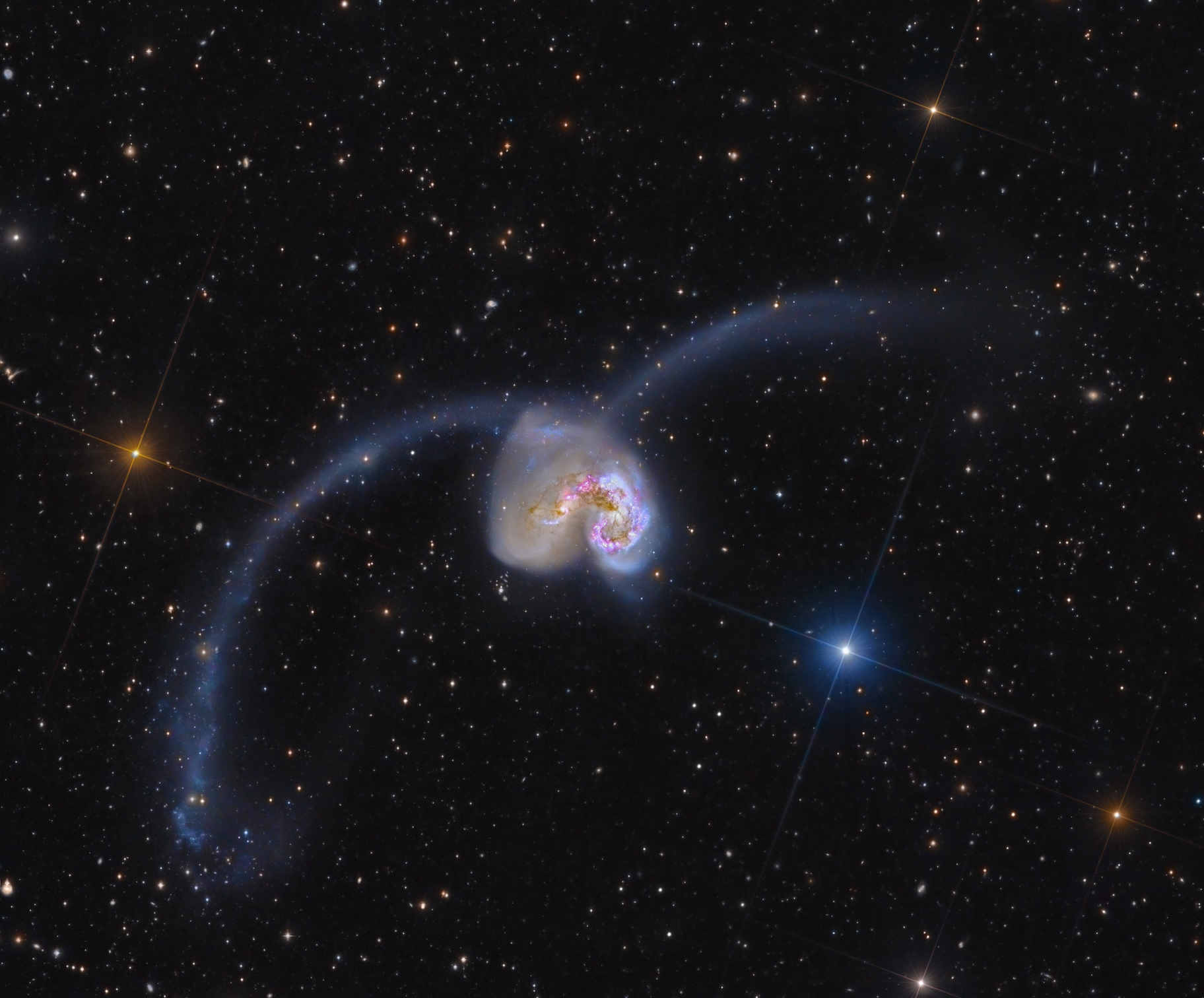
Copyright:
原文:
Some 60 million light-years away in the southerly constellation Corvus, two large galaxies are colliding. The stars in the two galaxies, cataloged as NGC 4038 and NGC 4039, very rarely collide in the course of the ponderous cataclysm, lasting hundreds of millions of years. But their large clouds of molecular gas and dust often do, triggering furious episodes of star formation near the center of the cosmic wreckage. Spanning about 500 thousand light-years, this stunning composited view also reveals new star clusters and matter flung far from the scene of the accident by gravitational tidal forces. The remarkable collaborative image is a mosaic constructed using data from small and large ground-based telescopes to bring out large-scale and faint tidal streams, composited with the bright cores imaged in extreme detail by the Hubble Space Telescope. Of course, the suggestive visual appearance of the extended arcing structures gives the galaxy pair its popular name – The Antennae.
中文翻譯:
在南方星座烏鴉的距離我們約6,000萬光年處,兩個大型星系正在碰撞中。這兩個星系分別被編號為NGC 4038和NGC 4039,雖然星星在這場持續數億年的劇變中非常少見地碰撞,但它們的大型分子氣體和塵埃雲卻經常發生碰撞,從而引發激烈的星系形成事件,特別是在宇宙浩劫的中心附近。
這幅壯觀的組合圖像跨越約50萬光年,展示了新的星團和因重力潮汐力而被拋擲得遠離事故現場的物質。這張引人注目的合作圖像是利用小型和大型地面望遠鏡所收集的數據拼接而成,以突顯大規模和微弱的潮汐流,並與哈勃太空望遠鏡所拍攝的明亮核心進行合成。這些延伸的弧形結構的視覺形狀也使得這對星系擁有了別名——天線星系(The Antennae)。
#AntennaeGalaxies #NGC4038 #NGC4039 #GalaxyCollision #StarFormation #Astronomy #HubbleSpaceTelescope #CosmicEvents #SpacePhotography #Astrophotography #CorvusConstellation
來源:NASA每日圖片


